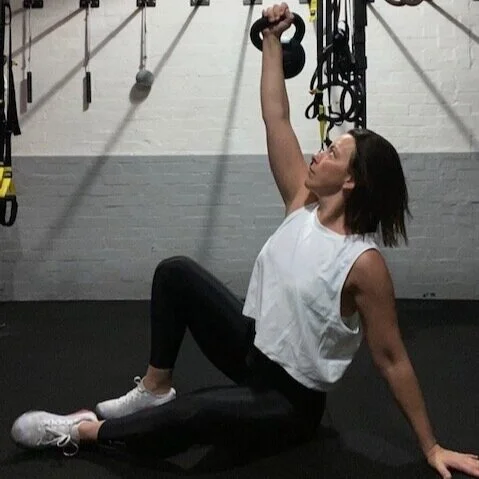What is Functional Movement?
Short Answer: Movement that has carryover into YOUR daily living, activities &/or sport.
Long Answer: Gone is the current research behind working in single joint movements and training muscles in isolation. You don’t need to look far to see rows of cardio and weight machines built in a circuit to understand how movement and strength used to be trained.
Our bodies move in patterns, move within movement subsystems. When you pick your child or a barbell off the floor, you are not using just your legs &/or arms, your efforts start from your core out.
The body is not designed to work in muscles. The body works in patterns
-Training Philosophy at State of Movement
So how is Functional Movement Different?
Functional Movement takes a systematic approach to how you move. Movements are trained with the foundations of anatomy to balance stability and mobility to experience true strength.
The 2 principals of Functional Movement are BREATH mechanics & JOINT position.
Breath Mechanics
Moving as the body was designed to move based on developmental strength (our first breath at birth to walking). Most of us were given the chance to figure out how to build strength from our breath enabling learning to roll, lunge, squat and stand. We used our breath to build strength from our core out. The quality of your breath cues and fuels your intrinsic core to build force that transfers out to your limbs. I personally experience and believe suboptimal breath mechanics lead to faulty movement patterns. Breath is your baseline to all functional movement. Without a breath match to your efforts, you will “rob Peter to pay Paul”, sacrificing the quality of the movement leading to dysfunctional patterns &/or pain.
Joint Position
Our body’s proprioception (how we move into & through our environment) is what maintains good joint position. Perception on how you move is controlled by our Central Nervous System (brain mostly, spinal cord for reflexes)
We move on auto-pilot from past experiences, injuries and trauma. Functional movement brings our bodies a safe place to feel balanced stability and mobility to earn strength.
Learning the skill to movements is integral. The (motor) control of a movement is where the body experiences, learns from, adjusts and finds new pathways to pattern. A functional approach to movement requires your full attention to feel the level of skill needed to do a movement effortlessly. Once a skill has been achieved you can then repeat it in a variety of movements with ease (dead bug > 4pt hinge > squat > picking up your child > moving a couch….)
As above in the short answer, functional movement has carryover into your life activities &/or sport. Your program should compliment how you use your body outside of the training. If your not on a program, suggest re-considering. Learn the basics of movement in your body and repeat it. Sweating feels great, lifting heavy weights feels great, but if a movement could be doing you harm it doesn’t make sense to do it.
“Move Well. Move Often” -Gray Cook (Functional Movement Screen Founder)
